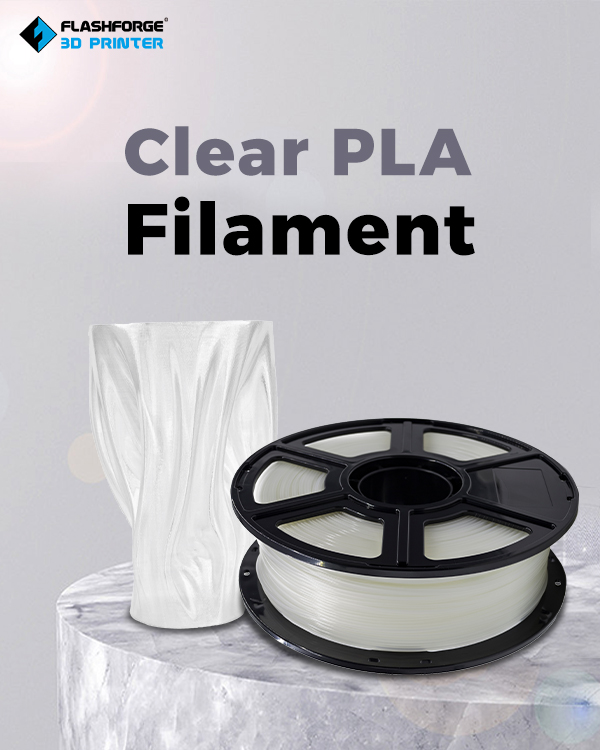 In the heart of Frostbite Falls, where the snow caps kissed the cobalt sky, lived Bullwinkle, an inquisitive moose with an unmatched passion for 3D printing. Bullwinkle’s workshop was brimming with half-finished prints, colored filaments, and scribbled notes as he fervently chased perfection.
In the heart of Frostbite Falls, where the snow caps kissed the cobalt sky, lived Bullwinkle, an inquisitive moose with an unmatched passion for 3D printing. Bullwinkle’s workshop was brimming with half-finished prints, colored filaments, and scribbled notes as he fervently chased perfection.
One day, he received a bundle of filaments – PLA, ABS, and PETG – without any instructions. He was eager to create, but he was stumped without the essential knowledge of the correct temperatures. Determined, Bullwinkle set off on a quest to find the perfect printing temperatures for each filament.
His first stop was the library, where he buried himself in books and online forums. He found that PLA, due to its versatile nature, required a hot end temperature between 180°C and 220°C. A bed temperature of 20°C to 60°C would enhance the first layer adhesion.
After gaining this new understanding, Bullwinkle returned home eagerly to try out his discoveries. He meticulously fine-tuned the settings, inserted the PLA filament into his printer, and observed as it flawlessly crafted a miniature 3D figure of his friend Bob.
Next on his list was ABS. Bullwinkle revisited his resources, learning that ABS, due to its durability and heat resistance, required higher temperatures.
The hot end should be between 220°C and 250°C, and the bed temperature must range from 80°C to 110°C. Once home, Bullwinkle successfully printed a sturdy stand for his Rocky statue. His final challenge was PETG. This filament, a hybrid of PLA and ABS, required precise heat management.
The hot end temperature should be between 220°C and 250°C and the bed temperature should be set between 70°C and 90°C. Bullwinkle raced home and printed a beautiful miniature of Frostbite Falls.
Bullwinkle’s workshop was no longer a place of half-completed projects but a studio of completed 3D masterpieces. His quest had taught him the art of patience and precision. The moose was thrilled, his eyes twinkling brighter than the northern lights.
His 3D printing adventure had not only led him to the perfect temperatures but also to a newfound sense of achievement and delight. And so, Bullwinkle’s tale of 3D printing unfolded, one filament at a time.
Looking to produce flawless 3D prints? Here’s a temperature guide that will help you achieve optimal results when using PLA, ABS, and PETG filaments. When it comes to 3D printing, the filament you choose plays a significant role in determining the success of your prints.
One of the most critical aspects to consider is the optimal temperature for each type of filament. PLA, ABS, and PETG, the most commonly used filaments, each has unique temperature needs. Let’s dive into the specifics.
PLA (Polylactic Acid)
PLA is a widely used filament due to its ease of use, biodegradability, and wide range of available colors and finishes.
1. Hot End Temperature: For most PLA filaments, the hot end (extruder) temperature should typically be set between 180°C and 220°C.
However, the exact temperature might depend on the specific brand or color of PLA.
So, it’s recommended to start at the lower end and gradually increase the temperature if you’re experiencing issues with extrusion or layer adhesion.
2. Bed Temperature: PLA doesn’t necessarily require a heated bed, but it can help improve the first layer adhesion.
If you choose to use a heated bed, a temperature range of 20°C to 60°C is generally recommended.
ABS (Acrylonitrile Butadiene Styrene)
ABS is a durable, flexible, and heat-resistant filament. It’s popular for making parts that need to withstand high temperatures and wear, such as mechanical parts or enclosures for electronics.
1. Hot End Temperature: ABS typically requires a higher hot end temperature than PLA.
The optimal temperature range is usually between 220°C and 250°C.
Be mindful, though, that printing at the higher end can produce fumes that need to be properly ventilated.
2. Bed Temperature: ABS requires a heated bed to prevent warping and to ensure good adhesion. The bed temperature should be set between 80°C and 110°C.
PETG (Polyethylene Terephthalate Glycol-Modified)
PETG combines the usability of PLA with the strength and heat resistance of ABS.
It’s a popular choice for projects that require durability without the difficulties associated with printing ABS.
1. Hot End Temperature: PETG prints best at a hot end temperature range between 220°C and 250°C.
Like with PLA and ABS, the exact temperature may need to be tweaked based on the specific brand or color of PETG you’re using.
2. Bed Temperature: A heated bed is necessary when printing with PETG.
A bed temperature between 70°C and 90°C is recommended to ensure optimal adhesion and minimize warping.
Conclusion
Remember, these are just guidelines, and the perfect temperature can vary based on your specific 3D printer model, the brand of filament, and even the color of the filament.
Always start with the manufacturer’s recommendations, and don’t hesitate to make minor adjustments if you’re not achieving the desired results. Happy printing!
Thanks for reading,
Bullwinkle



